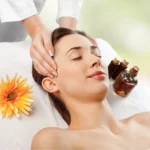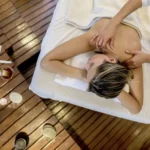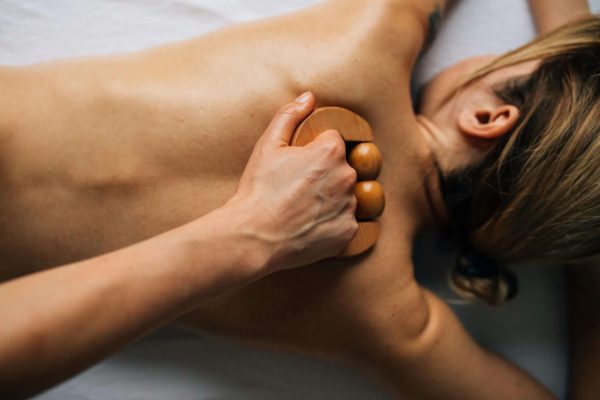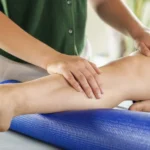Have you ever heard of a massage brush? If not, you’re not alone. A massage brush is a tool used to perform massage therapy. It is designed to provide a deep tissue massage, which can help to relieve muscle tension, reduce stress, and improve overall wellbeing. This article will explore the benefits of using a massage brush and how to use one correctly.
Benefits of a Massage Brush
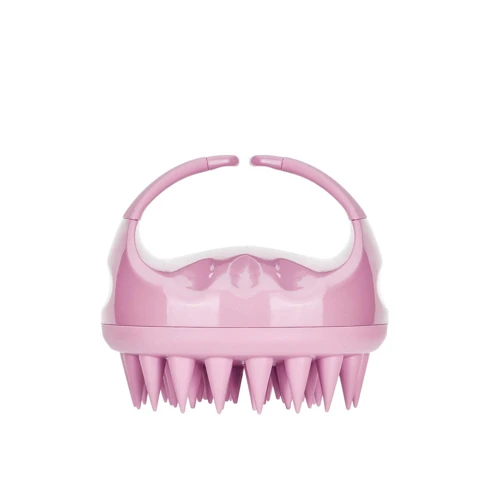
- Reduces Stress Levels: Massaging your back with a massage brush helps to relax the muscles, which in turn helps to reduce stress levels.
- Improves Circulation: Massaging with a massage brush stimulates the blood vessels, which helps to improve circulation throughout the body, providing a healthy boost of energy.
- Improves Flexibility: Massaging with a massage brush helps to loosen tight muscles and increase flexibility, helping to reduce the risk of injuries.
- Relieves Pain: Massaging with a massage brush can help to reduce pain, especially in areas with chronic pain.
- Improves Posture: Massaging with a massage brush can help improve posture by relieving tension in the muscles and joints, allowing for better alignment and improved posture.
- Improves Hair Growth: Massaging the scalp with a massage brush helps to stimulate the hair follicles, which can help to promote healthy hair growth.
To learn how to massage scalp with comb, simply use a massage brush or comb to gently massage your scalp in circular motions. This massage technique helps to stimulate the scalp, promoting healthy hair growth.
Types of Massage Brushes

| Brush | Description |
|---|---|
| Soft-Bristle Brush | These brushes have a soft, gentle, and flexible bristle head. They are great for providing a light massage and for stimulating circulation. |
| Hard-Bristle Brush | These brushes have a harder, more rigid bristle head. They are more suitable for a deep tissue massage and for providing a deeper massage. |
| Rolling Massage Brush | These brushes feature a roller head that can roll over the body in circular motions. They are great for providing a gentle and soothing massage. |
| Vibrating Massage Brush | These brushes feature a vibrating head that vibrates when touched. They are great for providing a stimulating massage and for relieving tension. |
Massage brushes come in a variety of shapes and sizes. These brushes are designed to provide a more intense massage than manual massage techniques. Depending on the type of brush, the massage can range from light to deep and from gentle to stimulating. Soft-bristle brushes are ideal for providing a light massage and stimulating circulation, while hard-bristle brushes are more suitable for deep tissue massage. Rolling massage brushes are great for providing a gentle and soothing massage, while vibrating massage brushes provide a stimulating massage and can help to relieve tension.
How to Use a Massage Brush
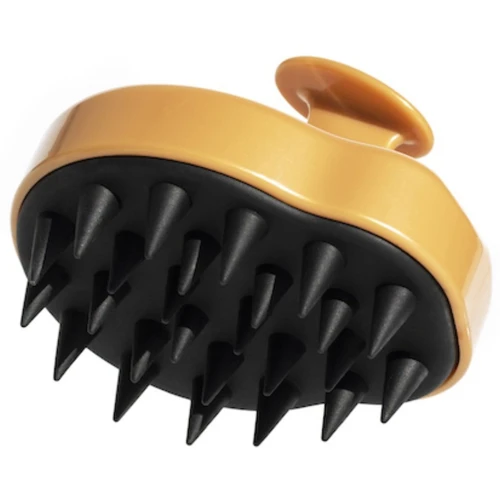
On the Body
Using a massage brush on the body is a great way to reduce tension and release stress. To use a massage brush, start at the feet and move up the body, brushing the skin in a circular motion. The length of the brushstrokes should range from short, light strokes to long, deeper strokes. Use the same circular motion throughout the body, brushing each area for around 30 seconds.
On the Scalp
Using a massage brush on the scalp can help to reduce headaches and tension, as well as increase circulation to the scalp. To use a massage brush on the scalp, start at the forehead and move the brush in a circular motion, brushing each area for around 30 seconds. Move the brush backwards until you reach the back of the head, then move the brush from side to side. Finish the massage by gently brushing the neck and shoulders.
How to Massage Scalp With a Comb
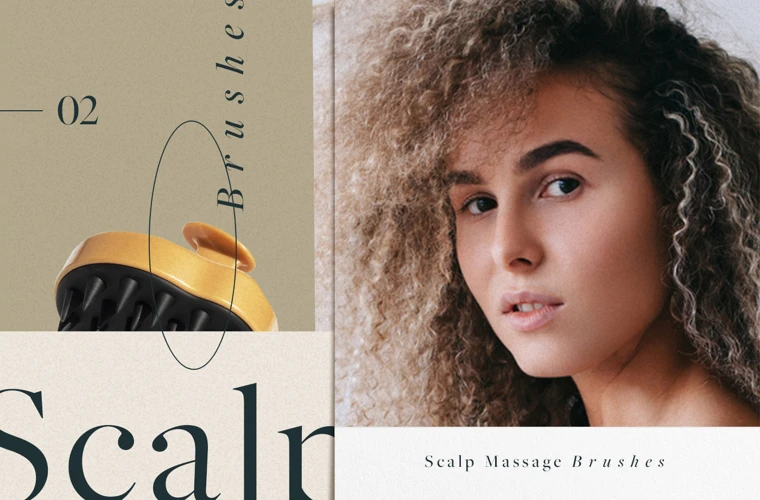
Using a comb to massage your scalp is an effective way of increasing blood circulation and relieving tension. It can also help to reduce stress and promote hair growth. Here are the steps for a successful scalp massage with a comb:
1. Start at the Roots: Begin by combing through the roots of your hair from the crown of your head to the nape of your neck. Use light, gentle strokes in a circular motion.
2. Work Your Way Out: Move the comb outwards in a vertical direction, working your way to the ends of your hair. Make sure to massage all areas of your scalp, taking care to avoid any sensitive areas.
3. Use Pressure Points: Utilize pressure points during your massage to stimulate circulation. Apply firm pressure to the pressure points on your scalp with the teeth of the comb.
4. Massage Your Neck: After massaging your scalp, move to the back of your neck and apply gentle pressure with the comb. This will help to relieve tension and stimulate circulation.
5. Finish With a Moisturizing Treatment: After your massage is complete, finish off with a moisturizing treatment such as a scalp oil or deep conditioning treatment. This will help to nourish and protect your hair.
What Are the Benefits of Massaging the Scalp?
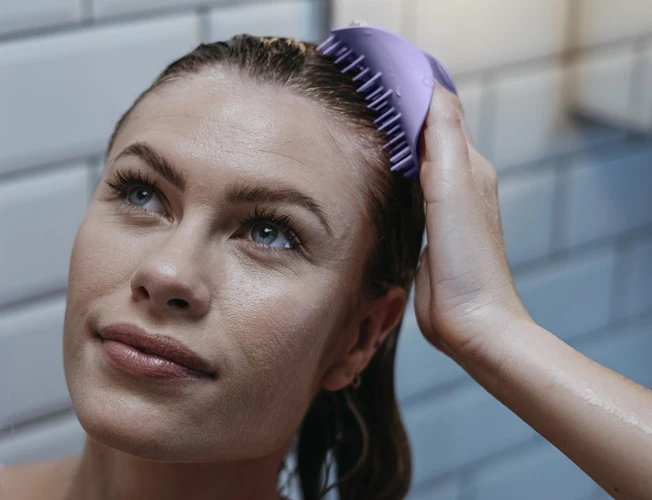
Relaxation: Massaging the scalp can help to relax the body and mind. This can lead to improved sleep, better concentration, and improved mental wellbeing.
Improved Circulation: Massaging the scalp can help to stimulate circulation to the scalp, which can improve the health of the scalp and hair. It can also help to reduce scalp tension and improve hair growth.
Stimulation of the Hair Follicles: Massaging the scalp can help to stimulate the hair follicles, which can improve hair health and growth.
Reduced Stress Levels: Stress can cause the scalp to become irritated and inflamed, leading to issues such as dandruff or hair loss. Massaging the scalp can help to reduce stress levels, which can improve the health of the scalp and hair.
Improved Hair Health: Massaging the scalp can help to improve the health of the hair by stimulating the follicles and encouraging healthy growth.
Reduced Hair Loss: Massaging the scalp can help to reduce the amount of hair loss. This is because it can stimulate the scalp and promote healthy hair growth.
Improved Hair Texture: Massaging the scalp can help to improve the texture of the hair by stimulating the scalp and encouraging healthy hair growth.
Reduced Scalp Tension: Massaging the scalp can help to reduce scalp tension, which can improve the health of the scalp and hair.
How to Choose a Massage Brush
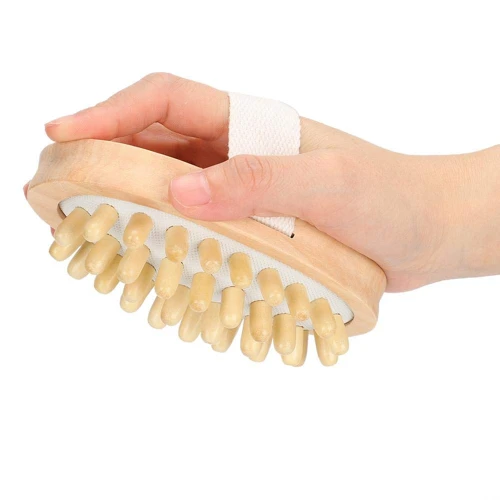
When choosing a massage brush, there are a few factors to consider. First, it’s important to find a brush that is comfortable to use and that fits the size of your hands. A brush that is too big or too small can be difficult to maneuver and may not be as effective.
Second, consider the type of bristles on the brush. Soft bristles with a gentle massage are best for sensitive skin, while firmer bristles can be used for deeper massage.
Third, consider the handle of the massage brush. A handle that is ergonomically designed to fit your hand comfortably is ideal.
Finally, look for a massage brush that is made of high-quality materials. A brush with a sturdy handle and durable bristles will be more effective and last longer.
By considering these factors, you can find the right massage brush for your needs.
Cautions and Precautions
- Skin Type – People with sensitive skin should use massage brushes carefully, as the bristles may cause irritation.
- Pressure – Applying too much pressure while using a massage brush, can cause skin irritation and redness.
- Direction of Movement – It is important to move the massage brush in the direction of hair growth.
- Cleaning – Make sure to clean and disinfect the massage brush after each use.
- Frequency of Use – Massage brushes should not be used more than once a week.
Frequently Asked Questions
What are the Benefits of Using a Massage Brush?
1. Improved Circulation: Massage brushes help to increase blood flow and stimulate the circulation of blood throughout the body. This helps to reduce stiffness and improve overall health.
2. Reduced Stress: Massage brushes can be used to reduce stress and tension, helping to promote relaxation and well-being.
3. Relieves Aches and Pains: Massage brushes can be used to help relieve muscle aches, pains, and stiffness. This is especially helpful for those who suffer from chronic pain conditions.
4. Improved Skin Tone: Massage brushes can help to increase circulation to the skin, resulting in improved skin tone, elasticity, and texture.
5. Improved Flexibility: Massage brushes can help to increase flexibility and range of motion, making it easier to perform everyday activities.
6. Improves Sleep Quality: Massage brushes can help to relax the body and mind, leading to improved sleep quality.
What Type of Massage Brush is Best for My Needs?
The type of massage brush that is best for you depends on your individual needs. Massage brushes come in a variety of shapes and sizes, with different handle lengths, textures, and bristles. Soft-bristled massage brushes are ideal for gentle massage, while firmer brushes are better for deeper tissue massage. Long-handled brushes are great for reaching hard-to-reach areas such as the back and shoulders, while short-handled brushes are perfect for targeting specific areas such as the feet. Consider your personal needs and preferences when selecting the best massage brush for your needs.
Are there any safety considerations I should be aware of when using a massage brush?
Always use gentle pressure: When using a massage brush, always use gentle pressure and avoid applying too much pressure, as this can cause irritation and injury.
Be aware of allergies: Before using a massage brush, be sure to check for any allergies or sensitivities to the materials used to make the brush, such as wood, rubber, or metal.
Keep the brush clean: Always keep the massage brush clean to prevent the spread of bacteria and other germs.
Avoid sensitive areas: Avoid using a massage brush on the face, eyes, and other sensitive areas of the body.
Avoid using on broken skin: Do not use a massage brush on broken skin or open wounds.
Consult a professional: If you have any concerns or questions about massage brushes, it is best to consult with a professional before using one.
How Often Should I Use a Massage Brush?
It is recommended to use a massage brush two to three times a week. This frequency should be adjusted based on the individual’s needs and preferences. Generally, it is best to start with a gentle massage and then gradually increase the pressure and intensity over time. It is important to listen to the body and adjust the massage technique as needed.
What are the Differences Between a Massage Brush and Other Massage Tools?
Massage brushes are a handheld tool used to massage the body, while other massage tools, such as foam rollers, massage balls, and vibrating massage tools, are designed to target specific areas. A massage brush is designed to be used in circular motions to massage the entire body, while other massage tools are designed to provide deeper massages in specific areas. Massage brushes are typically made of natural materials such as wood or bamboo, while other massage tools are often made of plastic or foam. Massage brushes are usually used with massage oils or lotions, while other massage tools are often used without any additional products.
Conclusion
Massage brushes offer a great way to relax and reduce stress. They can be used to massage away tension in the neck, shoulders, and other areas of the body. They are also great for relieving muscle soreness and increasing circulation. With regular use, massage brushes can help improve overall well being and leave you feeling refreshed and energized.
📚 References
⚠️ Disclaimer:
This article is for informational purposes only and does not constitute medical advice. Always consult with a licensed healthcare provider or certified massage therapist before beginning any new treatment, especially if you have pre-existing health conditions or concerns.


